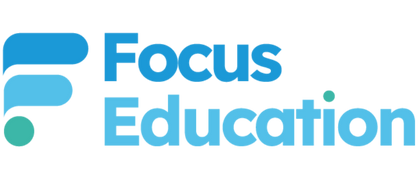What is metacognition, and what is its significance in primary schools?
Metacognition refers to higher-order thinking, which involves active control over the cognitive processes engaged in learning. Activities such as……:
- Planning how to approach a given learning task;
- Monitoring our comprehension of the task, and
- Evaluating progress toward the completion of a task.
….. are metacognitive in nature.
When I was a young pupil, many a moon ago, attending Llechyfedach Primary School in South Wales, I, not surprisingly, learnt to read. First in Welsh and then when I moved into the ‘Juniors’ in English. The only problem was that I was given the same set of books to read in both languages. So, ‘Y mair lorry goch yn mind i lan y bryn’, at the age of four became, ‘the little red lorry went up the hill’, at the age of seven.
I learnt to read, but I was not a reader. I always reflect on the experience of my bilingual introduction to reading as the main culprit, as I found it difficult to lose myself in a book. Later in school, in the last two years in the juniors, the afternoons always started with a quiet reading session. You have to imagine the classroom: desks in rows from front to the back of the room, the teacher behind the teacher’s desk, which sat on a small platform. The teachers never ventured from the desk but instead used their eyes to glare approval or disapproval as required.
The better behaved you were, the further back you sat. Now, I must confess to being quite close to the back; therefore, I could get away with almost anything. During those quiet reading sessions, I quickly realised I had to kill my boredom. Consequently, I invented a game of cricket instead of reading an enticing novel. The way my game worked was quite simple. I allocated each consonant with a different score. The ‘s’ and other familiar consonants scored a 1, whilst ‘j’ and ‘k’ scored a 4; and each ‘z’ was a 6. If three consecutive vowels would be a wicket. I promise you that you could have reasonable cricket totals using this method. I, therefore, played my private matches for over two years or more without being detected. Of course, it was to my detriment as I didn’t settle to read for pleasure until I was well into my 30s.
My rather long anecdotal introduction only serves to suggest that I acted metacognitively. You see, I used my meta-thinking to invent a unique game. I planned by creating the game; I monitored by considering changes to the original rules as I played, and I evaluated by considering if the game needed new rules after reflecting on the outcomes.
Now, I daresay, the word ‘metacognition’ wasn’t slipping off every teacher’s lip in the staff room of my primary school more than fifty years ago. However, by default, I ended up working meta-cognitively because I was consistently thinking about how to improve my original game.
Put this alongside the activities I have been using with young pupils in many primary schools and consider how much we have moved on. I have taken packets of Smarties into classrooms and invited pupils to create mathematics activities using the Smarties. It has been interesting to reflect that of all pupils, from early years to Year 6 that have participated, Years 5 and 6 requested the most approval before they got down to the task. Terms like, ‘Are we allowed to …’ and ‘Is it okay if…’ echoed around the older pupils’ classrooms. On the other hand, reception-aged children just tried things without any inhibition.
Implementing metacognitive strategies in a classroom
As teachers, we must be successfully implementing metacognitive strategies in a classroom, to do this, we need to help our learners to understand more about the metacognitive principles. For example, providing them with time to consider if they learn more effectively with background music and to help them relate to the fact that this learning is more complex than the learning we did yesterday. We need them to be confident enough to say, ‘I didn’t get that, I need to hear you repeat it.’ In this way, we can see learners taking responsibility for their learning.
We need all staff to understand that metacognitive strategies are sequential processes that one uses to control cognitive activities, and to ensure that a cognitive goal, for example, understanding a text, has been met. These processes help to regulate and oversee learning, and consist of planning and monitoring cognitive activities, as well as checking the outcomes of those activities.
The following is just one example of how this should be working in every classroom:
- After reading a paragraph in a text, learners may question themselves about the concepts discussed in the paragraph;
- The cognitive goal is to understand the text;
- Self-questioning is a common metacognitive comprehension monitoring strategy for checking understanding.
- If one cannot answer one's own questions or understand the materials, then steps must be taken to make understanding possible.
- The solution may be re-reading the paragraph. The metacognitive strategy of self-questioning is used to ensure that the cognitive goal of comprehension is met.
So, where does this leave us as educators and learners? The following two diagrams try to outline where we need to focus in order to create classrooms that really seek greater depth of understanding and promote responsibility for learning amongst the pupils.
Metacognition from the learners’ perspective:
Metacognition from the teachers’ perspective:
Continue the conversation
Related Products: Accelerating Pupil Progress by Applying the Principles of Metacognition
CONNECT WITH US
Twitter/X | focuseducation1
Bluesky | focuseducation
Facebook | focuseducation1
Instagram | focuseducation1
Linked In | Focus Education
Subscribe to our YouTube Channel



